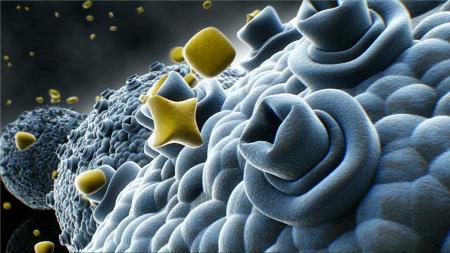By Kalwinder KaurJun 2 2012
Prostate cancer is the second leading cause of cancer mortalities in men. It is a malignant tumour, which generally affects men over 50, and the chance of diagnosing a prostate cancer is minimal. Survival mostly depends on the stage at which the cancer is detected. Now, new techniques have been developed that largely depend on an electronic nose and optoacoustics. These techniques can help improve diagnosis and prevent treatment delays.
 Nano nose smells cancer
Nano nose smells cancer
The BOND project, an EU research project, is developing an innovative non-invasive technique to promote the detection of disease at the early stage. Researchers have designed the key components of a bio-electronic nose, which consists of electrodes. These electrodes function as a nerve cord. Further, the artificial olfaction system depends on tiny biosensors that measure several hundred nanometric in size. These biosensors can detect even the smallest cancer cells. The system is immersed into a patient’s urine, and data on the substances found in the urine is conveyed to the PC. However, this technique is not sufficient because comprehensive information about tumours is still not available.
Researchers from the Fraunhofer Institute in St. Ingbert, Germany have developed a new integrated imaging biosensor to diagnose the size of tumours. The project called ADONIS includes the development of an advanced sensing method, wherein certain antibodies in the body are labeled with gold. A solution containing gold-antibody nano-particles is given to patients. Since antigens can adhere to specific receptors of cancer cells, this device transmits gold nano-particles directly to the tumour tissue. Alternatively, the cancer is heated with a laser impulse, which triggers a pressure wave. This wave can be detected through an ultra sound so as to diagnose the size and shape the cancer. Gold nano-particles are used to mark the tumour, which can then be distinguished easily from the other cells. Simultaneously, the laser beam illuminates the tissue and calculates its reflection signature. Through this technique, high sensitive images can be changed into 3D animations.
Studies have already been conducted on animals and trials on humans are still in the conceptual phase.
Source: http://www.youris.com/
Disclaimer: The views expressed here are those of the author expressed in their private capacity and do not necessarily represent the views of AZoM.com Limited T/A AZoNetwork the owner and operator of this website. This disclaimer forms part of the Terms and conditions of use of this website.